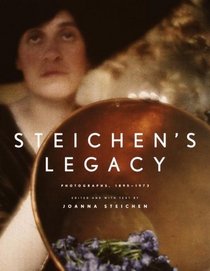Search -
Steichen's Legacy
Steichen's Legacy
Author:
A magnificent book--315 photographs by Edward Steichen, the man Auguste Rodin called "the greatest photographer of his time." — This is the first gathering in thirty years of Steichen's photographs, spanning seven decades: the landscapes, the haunting studies of flowers, the portraits of friends and... more »
Author:
A magnificent book--315 photographs by Edward Steichen, the man Auguste Rodin called "the greatest photographer of his time." — This is the first gathering in thirty years of Steichen's photographs, spanning seven decades: the landscapes, the haunting studies of flowers, the portraits of friends and... more »
ISBN-13: 9780679450764
ISBN-10: 0679450769
Publication Date: 9/26/2000
Pages: 408
Rating: ?
ISBN-10: 0679450769
Publication Date: 9/26/2000
Pages: 408
Rating: ?
0 stars, based on 0 rating
Genres:
- Arts & Photography >> Individual Artists >> ( S-U ) >> Steichen, Edward
- Arts & Photography >> Photography & Video >> Photographers, A-Z >> General
- Arts & Photography >> Photography & Video >> Photo Essays
- Arts & Photography >> Photography & Video >> Portraits




